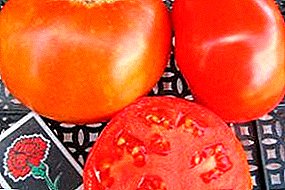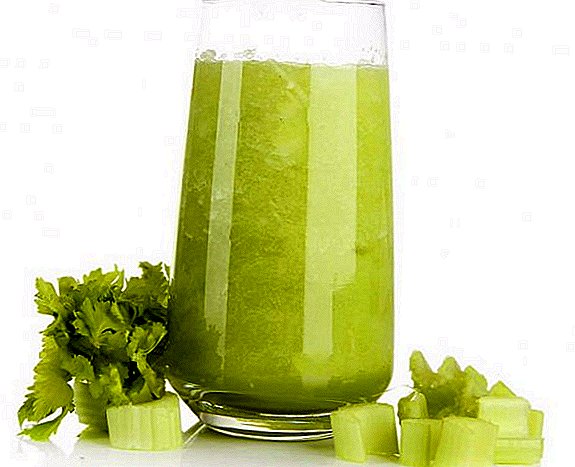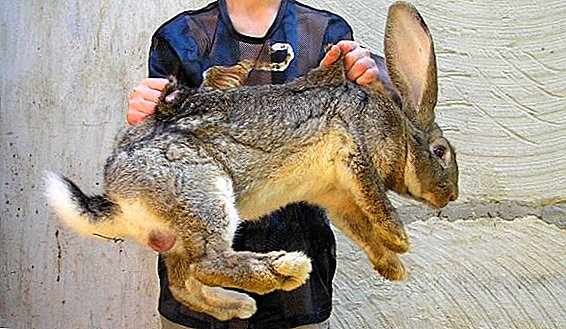 Any farmer engaged in animal husbandry must not only know how to properly care for the animals he breeds, but also what the intended result of his activity will be. The assessment is carried out by several parameters: the breed, the rate of growth and development, diet, conditions of detention. If certain requirements are dictated by one breed or another, an entrepreneur can count on a certain result indicated in its characteristics. Further, we will discuss the features of rabbit rearing and the parameters of their growth and development.
Any farmer engaged in animal husbandry must not only know how to properly care for the animals he breeds, but also what the intended result of his activity will be. The assessment is carried out by several parameters: the breed, the rate of growth and development, diet, conditions of detention. If certain requirements are dictated by one breed or another, an entrepreneur can count on a certain result indicated in its characteristics. Further, we will discuss the features of rabbit rearing and the parameters of their growth and development.
Average rabbit weight
On average, such an animal can weigh 4-5 kg. If we are talking about champions, their weight can reach 8 or more kg. Slaughter weight differs from live weight by about 30%. That is, if the animal before slaughter weighed 5 kg, then you will get a carcass weighing 3.5 kg, if 8 kg - about 5.5-6 kg of meat. For commercial purposes, mostly large breeds of giants are bred, which can quickly gain enormous weight, even if their diet consists of inexpensive feed.
Did you know? The largest rabbit in the world is Ralph. Its weight exceeds the mark of 25 kg, and length - 1.3 m.
Rabbits weight by breed
Each individual breed develops at a different pace. Weight gain is uneven and depends on many factors, including nutrition and conditions of detention. Average values for the most popular breeds are given in the table. 
| Breed name | Weight, kg | ||||
| newborns | at the age of 30 days | 60 days old | at the age of 120 days | 240 days old | |
| German giant | 0,9 | 1,2 | 3,2 | 6,4 | 9 |
| Belgian flanders | 0,06 | 0,8 | 1,6 | 3,6 | 7 |
| White giant | 0,07 | 0,7 | 1,6 | 3,4 | 5,7 |
| Blue Royal Giant | 0,07 | 0,6 | 1,6 | 3,4 | 5 |
| Gray giant | 0,06 | 0,6 | 1,5 | 3 | 4,8 |
| Soviet chinchilla | 0,06 | 0,6 | 1,5 | 2,9 | 4,8 |
| Ram | 0,08 | 1 | 2,4 | 3,8 | 4,5 |
| New Zealanders | 0,06 | 0,6 | 1,6 | 3,2 | 4,3 |
| Butterfly | 0,05 | 0,6 | 1,6 | 3,2 | 4,3 |
| Californians | 0,05 | 0,5 | 1,5 | 3,1 | 4,3 |
Californians
Rabbits of this breed have a white body, black ears and paws, a tail and a speck on the nose. Black markings may have a different dark color - dark brown. All decals have clear outlines. The fur is thick and dense.
Eye color - red. The head of large Californians, ears - upright, nose - humpback. They have a short neck and a muscular, downed body. Their paws are also short, but there is no basement at all.
The bones of these rabbits are light, but strong. The chest is also well developed. The animals gain an average of 4-5 kg. Females are very prolific and lead to 10 rabbits. 
New Zealanders
New Zealanders are of two types: white and red. White individuals have silky hairs and are completely white. They have a medium-sized head, short, symmetrical ears and the same neck. Their bodies are compact and muscular, their legs straight and strong.
These are rabbits with a hunchbacked nose and a wide profile. Eye color - red. The average weight of an adult individual is from 4 to 4.5 kg.
The red individuals got their name because of the red-brown color of thick shiny wool. They also have a short neck, a small head and a body in the shape of a cylinder.
Important! Distinctive features - the presence of clarified areas of wool in the mouth, eyes, thighs and abdomen.The ears are leaf-shaped and have a length of less than 11 cm. The breasts of these animals are wide, and there is no decompression. Eye color - brown. In adulthood, rabbits weigh about 5 kg, with females, as a rule, heavier than males.

White and German giants
The White Giant is a breed with snow-white coat and red eyes. Its representatives lack any marks on thick wool. The body is strong, slightly elongated, the back is straight, the chest is muscular, and the paws are straight and long. Perhaps the development of the fenders.
We advise you to get acquainted with different breeds of rabbits: French sheep, marder, Rex, Angora, black-brown, Viennese blue.
In males, the head is more rounded than females. The latter for an average of 8 babies result in around, the maximum is 14. Adults weigh 5-7.5 kg.  German giants or, as they are called, rizeny - heavyweights. They have a massive, muscular, elongated body, thick legs, a broad chest, a large head and long ears. Short hair is thick and dense. The color can be different: gray, yellowish, agouti, blue or even black.
German giants or, as they are called, rizeny - heavyweights. They have a massive, muscular, elongated body, thick legs, a broad chest, a large head and long ears. Short hair is thick and dense. The color can be different: gray, yellowish, agouti, blue or even black.
Representatives of the breed behave very clumsily, but have tremendous power. In adulthood, they can weigh 6-10 kg. 
Gray giant
Gray giants in color are very similar to hares. Distinctive features - a light belly and the presence of white "socks". Coat of medium density and medium length. The body is elongated, chest with dewlap, the back is wide, legs are straight and long.
Learn more about the organization of the dwelling for the rabbit: the selection and construction of the cage, the manufacture of feeders (bunker) and drinking bowls.
The large head also has an elongated shape, ears with rounded tips. The weight of an adult individual, depending on the conditions of detention and the quality of care, can vary from 4 to 7 kg. 
Soviet chinchilla
Soviet chinchillas have pleasant to the touch fluffy wool. Color - gray-blue.
Important! There should be white specks on the stomach, as well as around the eyes, and a black border on the ears and tail.The build of these rabbits is powerful with well-developed bones. Small head, ears straight. An adult can weigh 4-6 kg.

Belgian flanders
Flandre is a bit like a little puppy. He is very clumsy with a long body, wide bosom, straight back and thick legs. Head and ears are also big.
The coat is thick and dense. The color may be grayish-hare, yellowish-gray, dark gray. The undercoat has a bluish tint. The inside of the legs, the belly and the area under the tail may have a white color. An adult weighs about 6-8 kg. Females are usually larger than males. 
Rabbits butterfly and ram
Butterflies - rabbits with a strong bone system. They have a knocked down, muscular body and the same strong legs, broad chest and long back. Head shape - rounded.
The representatives of this breed are predominantly white in color, while the sides, nose, ears, tail, and paws are covered with black specks. On the face there is also a spot, resembling a butterfly. An adult weighs in the range of 4-5 kg.  The ram is distinguished by its hanging ears. In addition, it has protruding frontal bones on the muzzle and puffy cheeks. The body of the individuals of this breed is slightly elongated, the chest is deep, the back is wide, the legs are strong and muscular.
The ram is distinguished by its hanging ears. In addition, it has protruding frontal bones on the muzzle and puffy cheeks. The body of the individuals of this breed is slightly elongated, the chest is deep, the back is wide, the legs are strong and muscular.
The sheep have thick and fluffy fur color agouti. The color may be different: black, white, grayish, variegated, etc. In adulthood, rabbits weigh 4.5 kg. 
Blue Royal Giant
The blue royal giant outwardly looks small and very harmonious. The head looks light, the ears are straight, the body is compact, the legs are muscular, and the chest is wide with a pronounced basement. The color of the eyes is dark blue.
We advise you to read about how to water the rabbits with water, what to not feed the rabbits with, what grass to feed the rabbits, what to eat and what to feed the rabbits in the winter.
The coat is distinguished by its density and glossy shine. Color - gray. Adult rabbits weigh an average of 4-5 kg. 
How to feed rabbits for quick weight gain
Rabbits are herbivores, but with such a diet it is impossible to achieve a good result. In order for the animal to quickly gain weight, it is fed with animal feed, grain, vegetables, oilcake, bran, herbs, shoots of trees, soybeans, peas and other things, adding chalk and bone meal.
They feed young animals up to 4 times a day, adults need 2 times. Feed is given at the same time daily. Clean water should be constantly in the water bowl. Serving size is:
- concentrated feed - 40-60 g;
- greens - up to 0.5 kg;
- juicy food - up to 0.2 kg;
- hay - 150 g
Did you know? Little Idaho - the smallest pygmy rabbits. Their weight in adulthood reaches a maximum of 0.45 kg.With three meals a day, a portion of concentrates, hay or greens is divided into 2 equal parts: one is given in the morning, the second - in the evening. At lunch, the rabbit eats only juicy feed. It is recommended to add vitamin and mineral complexes to food.
 Breeding rabbits is not so simple. It is important not only to choose the right breed, but also to think carefully about the diet and create optimal conditions for keeping. Planting the largest breed, which is famous for its parameters, but feeding it with one green, you should not rely on the promised 9 kg in 8 months. Pay due attention to the care of animals, so that in the future you don’t have to worry about the result.
Breeding rabbits is not so simple. It is important not only to choose the right breed, but also to think carefully about the diet and create optimal conditions for keeping. Planting the largest breed, which is famous for its parameters, but feeding it with one green, you should not rely on the promised 9 kg in 8 months. Pay due attention to the care of animals, so that in the future you don’t have to worry about the result.











